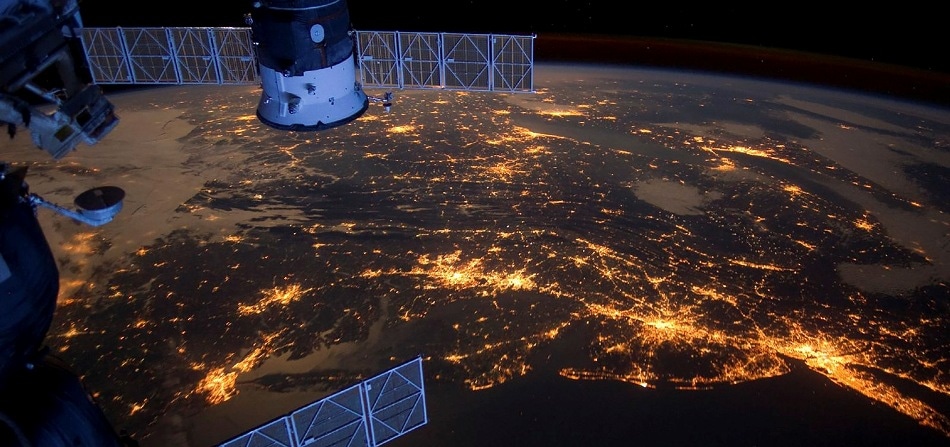Feb 4 2019
In certain zones in space, outside the atmosphere of Earth, useless satellites go to die or, otherwise, to hang out—forever. Located too high to burn up in the atmosphere, but extremely slow to escape Earth’s gravity, old satellites are condemned to circle in the so-called graveyard orbits.
 A Stanford engineer is helping to develop an AI-based navigation system that would enable the space-borne equivalent of tow trucks to find and rescue satellites from so-called graveyard orbits. (Image credit: Pixabay)
A Stanford engineer is helping to develop an AI-based navigation system that would enable the space-borne equivalent of tow trucks to find and rescue satellites from so-called graveyard orbits. (Image credit: Pixabay)
Simone D’Amico, Stanford professor of aeronautics and astronautics, intends to change all that.
His Space Rendezvous Lab (SLAB) is collaborating with the European Space Agency (ESA) to urge the development of an artificial intelligence system that functions like the orbital equivalent of a tow truck. The two teams are conducting a competition for an AI system with the ability to detect a derelict satellite and, without the need for any input from assets on Earth, steer a repair vessel to navigate alongside to repair, refuel, or remove it.
The software competition is a landmark in a wider research and development program which, according to D’Amico, will feed into his lab’s attempts at developing less-expensive navigation systems that will be used by next-generation spacecraft to maneuver toward distressed satellites or rendezvous with other cooperative satellites.
The navigation system and algorithms developed by D’Amico are intended to cope with the stringent constraints of space travel. The study will be incorporated into two missions slated to be launched in 2020: the Impulse One by Infinite Orbits, a technological demonstration of the space tow truck; and NASA Ames’ Starling mission, which will reveal how a swarm of spacecraft could navigate autonomously. When compared to earlier satellite projects, multiple nanosatellites are used in these new missions, where each nanosatellite has tight limitations in terms of weight, size, maneuverability, and power availability.
In space every gram, every electron, every resource must be used to its greatest advantage, especially on small satellites.
Simone D’Amico, Professor of Aeronautics and Astronautics, Stanford University.
The navigation system proposed by D’Amico would be compact, low-cost, and energy-efficient. In order to locate defunct satellites, the repair vehicle would depend on cameras that capture simple gray-scale images, just 500 x 500 pixels, to minimize data storage and processing demands. AI algorithms and barebones processors that emerge out of the competition would be directly incorporated into the repair satellite. The system will avoid the need for ground communication. The aim is to achieve simplicity—algorithms and processors that need limited computation and only low-resolution images to navigate space.
“The spacecraft would have to able to see and think for itself,” stated Sumant Sharma, a graduate student in D’Amico’s lab.
Finding the Satellite
Sharma assisted D’Amico in making the contest possible by developing a database of images of satellites that orbit. AI systems are trained through a method called machine learning. In a machine-learning approach, a computational system is taught to spot cats by feeding the system images of cats to a point where the artificial intelligence develops the algorithms to identify them.
As a repository for abandoned satellite selfies was lacking, D’Amico and Sharma employed the methods of augmented and virtual reality to develop a database of 16,000 images that can be used as training material for machine-learning systems.
The competition, which started on February 1st, 2019, will invite AI and machine-learning labs from across the globe to visit a portal created by ESA. Entrants will be given time until July 1st, 2019, to download the images, work on the data, train their algorithms, and submit the results in the virtual competition. The work contributed as part of the competition will be used by D’Amico’s lab to assess and enhance the performance of the navigation system that his Stanford group has already been creating.
The do-it-yourself vision of D’Amico for a low-cost navigation system is based on an innovative breed of space research that calls on the widest possible participation to bring the best thinking to bear on technical challenges.
We are democratizing space by crowdsourcing the artificial intelligence and the data needed to train new algorithms. It is Space 2.0.
Simone D’Amico, Professor of Aeronautics and Astronautics, Stanford University.
This study was supported the European Space Agency, the Air Force Office of Scientific Research, and NASA’s Small Spacecraft Technology Program.
Future space ‘tow truck’ spots a derelict satellite
Machine learning systems are typically trained using labeled images, and since no picture library of space hulks exists, researchers had to create thousands of simulated images like this to show what a repair satellite would see as it patrolled a region known as the Orbital Graveyard. (Video credit: Stanford University)